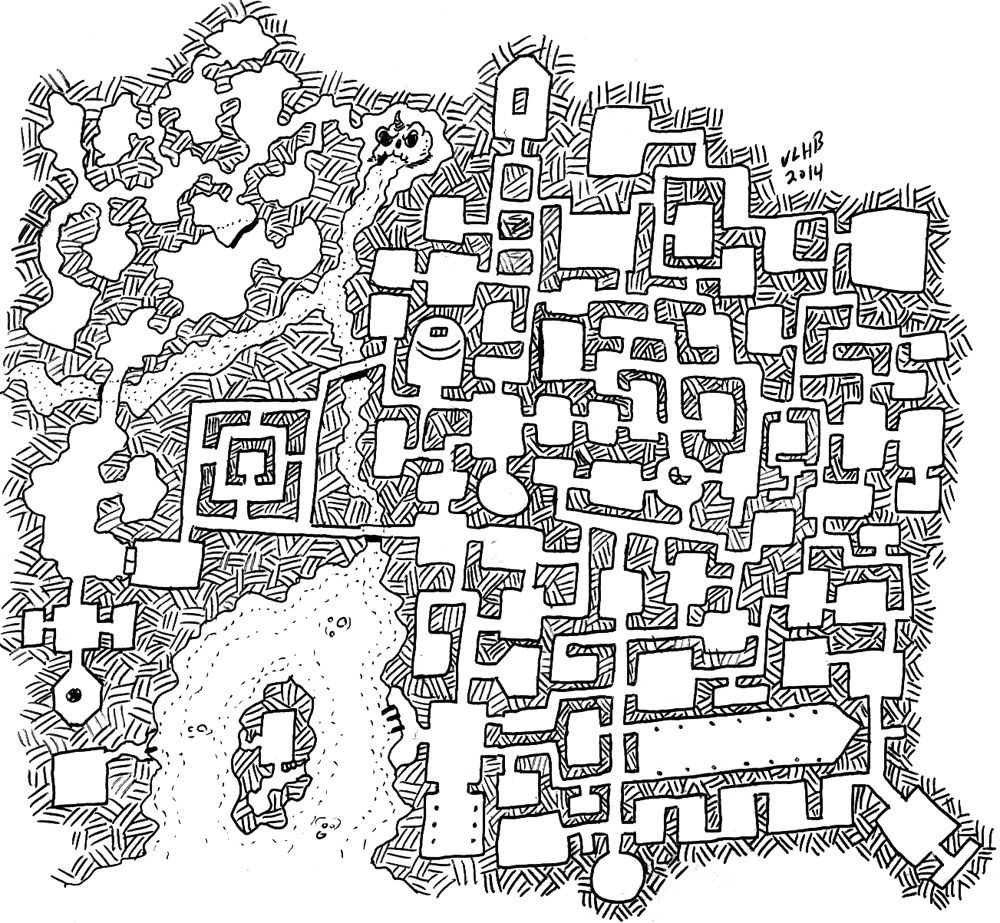I love Paladins. I always have. My first AD&D character was a paladin (Stryfe Strikehard). I love all types of paladins--the golden armored paragon of virtue, the grim and tortured vampire hunter, the boisterous orc-slaying dwarf. Love. Them. All.
I also love anti-paladins. The best heroes need the best villains. Obi-Wan needs Vader. Superman needs Darksied. Eowyn needs the Witchking.
In 5th Edition D&D, paladins are pretty cool. The different oaths they take at 3rd level gives them a lot of variety and flavor. Oaths also present a terrific opportunity to create a variety of anti-paladins, blackguards, and other villainous champions.
The basic abilities of the paladin do not need to change. Divine Sense, Lay on Hands, Fighting Style, Spellcasting, Divine Smite, and Divine Health are as useful to the chaotic evil reaver as they are to the lawful good champion.
At third level, the paladin may take the
Oath of Ruin, detailed below.
The Oath of Ruin was intended to be a mix of the D&D blackguard with the Warhammer Chaos Warrior, as well as a little bit of Elric, and a touch of Rust Cohle's nihilism.
Enjoy!
Oath of Ruin
A paladin who takes the Oath of Ruin has seen that the world is broken and strives to complete that ruination. Perhaps the paladin was once a good person who has had their hopes shattered. Perhaps the paladin has always been wicked. Perhaps the paladin just wants to watch the world burn. A Paladin of Ruin is empowered by dark gods, alien outsiders, or the raw power of Cosmic Entropy. He uses his strength to dominate and destroy others while increasing his own power. Most Paladins of Ruin are evil, although many are chaotic neutral. Some very few are actually good, who believe that the destruction of this world will usher in the creation of Paradise.
Tenets of Ruin
Everything Rots. Nothing lasts. Every creature starts to die on the day it is born. The creations of man, elves, dragons, and gods, all crumble. Do not try to stop entropy. Usher it along, and be the last one standing.
Power is Truth. There is no truth but your truth. Bend the world to your will. Cultivate your own power. The weak are tools for your own disposal.
Let None Judge You. The others are deluded by their illusions of justice and mercy. They call you evil, but you are a force of nature. It is your place in the universe to be the Destroyer. You are doing what is right; you are doing what is needed.
Revil in Ruin. You are the destroyer. Never doubt yourself or your purpose. Find delight in sorrow and purpose in chaos. Embrace your hate.
Oath Spells
You gain oath spells at the paladin levels listed.
Paladin Level
|
Spells
|
3rd
|
Hex, Hellish Rebuke
|
5th
|
Crown of Madness, Blindness/Deafness
|
9th
|
Animate Dead, Fear
|
13th
|
Blight, Evard’s Black Tentacles
|
17th
|
Contact Other Plane, Contagion
|
Channel Divinity
When you take this oath at 3rd level, you gain the following two Channel Divinity options.
Tainted Blade. As an action, you can imbue one weapon with negative energy. For one minute, your weapon flickers with a black radiance. Your weapon's damage type becomes necrotic for the duration. While Tainted Blade is in effect, when you damage an enemy with this weapon, they must make a CHA save. If the saving throw fails, then the target's maximum Hit Points are reduced by an amount equal to the damage inflicted. This reduction lasts until the target completes a Long Rest. If your weapon is not already magical, it is considered magical for the duration.
You can end this effect on your turn as part of any action. If you are no longer holding or carrying this weapon, or you fall unconscious, this effect ends.
Kneel! As an action, present your holy symbol and shout your hatred at a target. The target must make a WIS save or gain the Prone condition. On its subsequent turns, the victim can use its Move action to make a WIS save to stand up. This effect ends once a successful save is made, you fall unconscious, or a number of turns pass equal to your CHA Bonus +1 (minimum 1).
Entropic Aura
At 7th level, you and all your allies within 10 feet gain Resistance against necrotic and poison damage while you are conscious. You and your allies also have Advantage against all Necromancy spells. At 18th level, this radius increases to 30 feet.
Ruinous Soul
At 15th level, you gain the ability to infuse your attacks with the essence of ruin. After a successful melee attack, you can use a Bonus Action to activate this power. At the start of their turn, the target must make a CHA save or take 1d8 necrotic damage. The victim must make this save every turn or take another 1d8 necrotic damage. Once they make this save, the effect ends. The body of a creature slain by this damage crumbles to ash.
This ability cannot be used again until you take a short or long rest.
Aura of Corruption
At 20th level, as an action, you can emanate sickly green-purple aura of corrupting energy. For one minute, this fell light flickers forth from your core. The ground for 30 feet around you cracks and becomes covered in ash and rot.
Whenever an enemy creature starts its turn within 30 feet of you, it must make a CON save or suffer the “Poisoned” condition. It must make this save again every turn, until it leaves your aura.
Once you use this feature, you cannot use it again until you finish a long rest.






